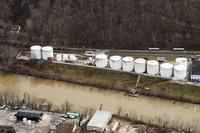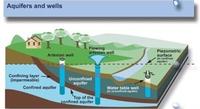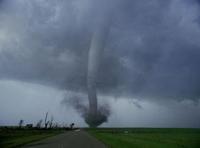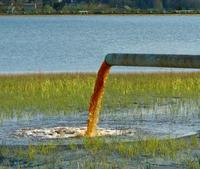-
Extensive corrosion found at chemical tanks of W.Va. site which contaminated region

Investigators by the U.S. Chemical Safety Board (CSB) have reported that they detected significant corrosion in MCHM chemical storage tanks at the Freedom Industries site responsible for a 9 January contamination of the Elk River which has impacted over 300,000 residents of the area.
-
-
Updating information about U.S. regional earthquake hazards
The USGS recently updated their U.S. National Seismic Hazard Maps, which reflect the best and most current understanding of where future earthquakes will occur, how often they will occur, and how hard the ground will likely shake as a result. While all states have some potential for earthquakes, 42 of the 50 states have a reasonable chance of experiencing damaging ground shaking from an earthquake in fifty years (the typical lifetime of a building). Scientists also conclude that sixteen states have a relatively high likelihood of experiencing damaging ground shaking. These states have historically experienced earthquakes with a magnitude 6 or greater. To help make the best decisions to protect communities from earthquakes, new USGS maps display how intense ground shaking could be across the nation.
-
-
Groundwater reservoirs are being depleted at an increasing rate

The rate at which the Earth’s groundwater reservoirs are being depleted is constantly increasing. Annual groundwater depletion during the first decade of this century was twice as high as it was between 1960 and 2000. India, the USA, Iran, Saudi Arabia, and China are the countries with the highest rates of groundwater depletion. About 15 percent of global groundwater consumption is not sustainable, meaning that it comes from non-renewable groundwater resources. The increased use of groundwater for irrigation also results in a rise in sea levels, with roughly one tenth of the total sea level rise during the period from 2000 to 2009 due to groundwater depletion.
-
-
Debate in Texas over fossil fuel-based economic growth
Texas officials tout the state’s economic growth, which is due in part to the state’s energy sector. That same energy sector puts Texas’ economy at risk in decades to come, with scientists saying that this economic growth comes at a high cost.State climatologist John Nielsen-Gammon, who was appointed by then-Governor George W. Bush, notes that the state is projected to be several degrees warmer and experience longer and more severe droughts. The see along portions of the state’s 367-mile Gulf Coast has already risen up to one foot in the past century.
-
-
Silicon Valley braces for floods, storm surges caused by sea level rise
A new analysis found that $36.5 billion in property and at least 145,000 California residents could be directly affected in the next thirty years from flooding caused by sea level rise. San Mateo County, home to major corporations including Facebook, Oracle, and Genentechin Palo Alto, and the low-income population of East Palo Alto, would be the most affected.
-
-
The price tag of the 2° climate target
Addressing climate change will require substantial new investment in low-carbon energy and energy efficiency — but no more than what is currently spent on today’s fossil-dominated energy system. To limit climate change to 2° Celsius, low-carbon energy options will need additional investments of about $800 billion a year globally from now to mid-century, according to a new study, but much of that capital, however, could come from shifting subsidies and investments away from fossil fuels and associated technologies. Worldwide, fossil subsidies currently amount to around $500 billion per year.
-
-
Tornado threat in Tornado Alley can be eliminated by building walls: scientists

In the United States, most devastating tornadoes occur in Tornado Alley, which is a strip of land between the Appalachian Mountains and the Rocky Mountains, including most American Midwest states. In 2013, there were 811 confirmed tornadoes in the United States, 57 in Europe, and 3 in China. Among 811 tornadoes in the United States, most, especially the most devastating ones, occurred in Tornado Alley. Scientists say that building three 300 meter high and 50 meter wide walls, at the cost of about $160 million each — the first close to the northern boundary of the Tornado Alley, maybe in North Dakota; the second one in the middle, maybe in the middle of Oklahoma and going to east; the third one in the south of Texas and Louisiana – would significantly reduce, if not eliminate altogether, the threat of devastating tornadoes in Tornado Alley.
-
-
N.C. “rolling” 30-year sea level rise report gaining support from both sides
In 2010, coastal developers and Republican legislators in North Carolina were alarmed when a state science panel warned that the Atlantic Ocean is expected to increase by thirty-nine inches along the state’s shores by the end of the century. The state legislature soon ordered a four-year moratorium on official sea-level predictions and gave the Coastal Resources Commission(CRC) guidelines for developing a new official state forecast. In May, Frank Gorham III, chairman of the commission, announced that the next forecast will only predict sea-level rise for the next thirty years, a time span during which model-based predictions about sea level rise along the North Carolina coast – about eight inches — are largely accepted by both sides to the climate change debate. Gorham stresses, however, that he wants a “rolling” 30-year forecast to be updated every five years.
-
-
Chemical pollution of European waters is worse than anticipated

Until now environmental authorities and parts of the scientific community have considered toxic chemicals to be rather a local problem affecting only a few bodies of water. A new study, however, reveals for the first time on a large scale the ecological risks emanating from chemical toxicants for several thousands of European aquatic systems. Chemical toxicity represents an ecological threat to almost half of all European bodies of water, and in approximately 15 percent of cases, the biota in freshwater systems may even be subject to acute mortality.
-
-
Smart coating could make oil-spill cleanup faster and more efficient
In the wake of recent off-shore oil spills, and with the growing popularity of “fracking” — in which water is used to release oil and gas from shale – there is a need for easy, quick ways to separate oil and water. Now, scientists have developed coatings that can do just that.
-
-
Urban man-made drainage may increase risk of flooding
Installing drainage systems in developing towns and cities can cause water to reach rivers more quickly, potentially raising the risk of flooding, say scientists. They suggest that, in some cases, storm drains may do more to increase the risk of flooding than changes in the land surface.
-
-
Towns in northeast U.S. develop adaptation strategies for climate change
In many northeastern towns along the coast of the United States, local officials are attempting to identify and predict the effects of climate change which will occur over the next few decades. “You’re going to feel impacts. It’s a global issue with local effects…We don’t know exactly what’s coming, so let’s plan to be adaptable,” says a leader of a regional climate adaptation project.
-
-
Debate continues over controversial lawsuit-killing Louisiana oil bill
Governor Bobby Jindal (R-Louisiana) is facing a difficult decision over whether or not to veto a measure which would kill a contentious lawsuit filed by the Southeast Louisiana Flood Protection Authority-East (SLFPA-E) against ninety-seven different oil and gas companies regarding long-term environmental damage claims, including those of the 2010 Deepwater Horizon explosion.
-
-
Reducing use of nitrogen-based fertilizers helps combat climate change

Nitrogen-based fertilizers spur greenhouse gas emissions by stimulating microbes in the soil to produce more nitrous oxide. Nitrous oxide is the third most important greenhouse gas, behind only carbon dioxide and methane, and also destroys stratospheric ozone. Agriculture accounts for around 80 percent of human-caused nitrous oxide emissions worldwide, which have increased substantially in recent years, primarily due to increased nitrogen fertilizer use. Scientists help farmers around the globe apply more-precise amounts of nitrogen-based fertilizer to help combat climate change.
-
-
Connecticut preparing for sea level rise, adapting to climate change

Earlier this year the University of Connecticut announced the creation of the Institute for Community Resiliency and Climate Adaptation. the Institute is designed to increase the resilience and sustainability of vulnerable communities and individuals along Connecticut’s coast and inland waterways as they are affected by the growing impact of climate change on the environment.
-
- All
- Regional
- Water
- Biometrics
- Borders/Immig
- Business
- Cybersecurity
- Detection
- Disasters
- Government
- Infrastructure
- International
- Public health
- Public Safety
- Communication interoperabillity
- Emergency services
- Emergency medical services
- Fire
- First response
- IEDs
- Law Enforcement
- Law Enforcement Technology
- Military technology
- Nonlethal weapons
- Nuclear weapons
- Personal protection equipment
- Police
- Notification /alert systems
- Situational awareness
- Weapons systems
- Sci-Tech
- Sector Reports
- Surveillance
- Transportation
Advertising & Marketing: advertise@newswirepubs.com
Editorial: editor@newswirepubs.com
General: info@newswirepubs.com
2010-2011 © News Wire Publications, LLC News Wire Publications, LLC
220 Old Country Road | Suite 200 | Mineola | New York | 11501
Permissions and Policies
Editorial: editor@newswirepubs.com
General: info@newswirepubs.com
2010-2011 © News Wire Publications, LLC News Wire Publications, LLC
220 Old Country Road | Suite 200 | Mineola | New York | 11501
Permissions and Policies
